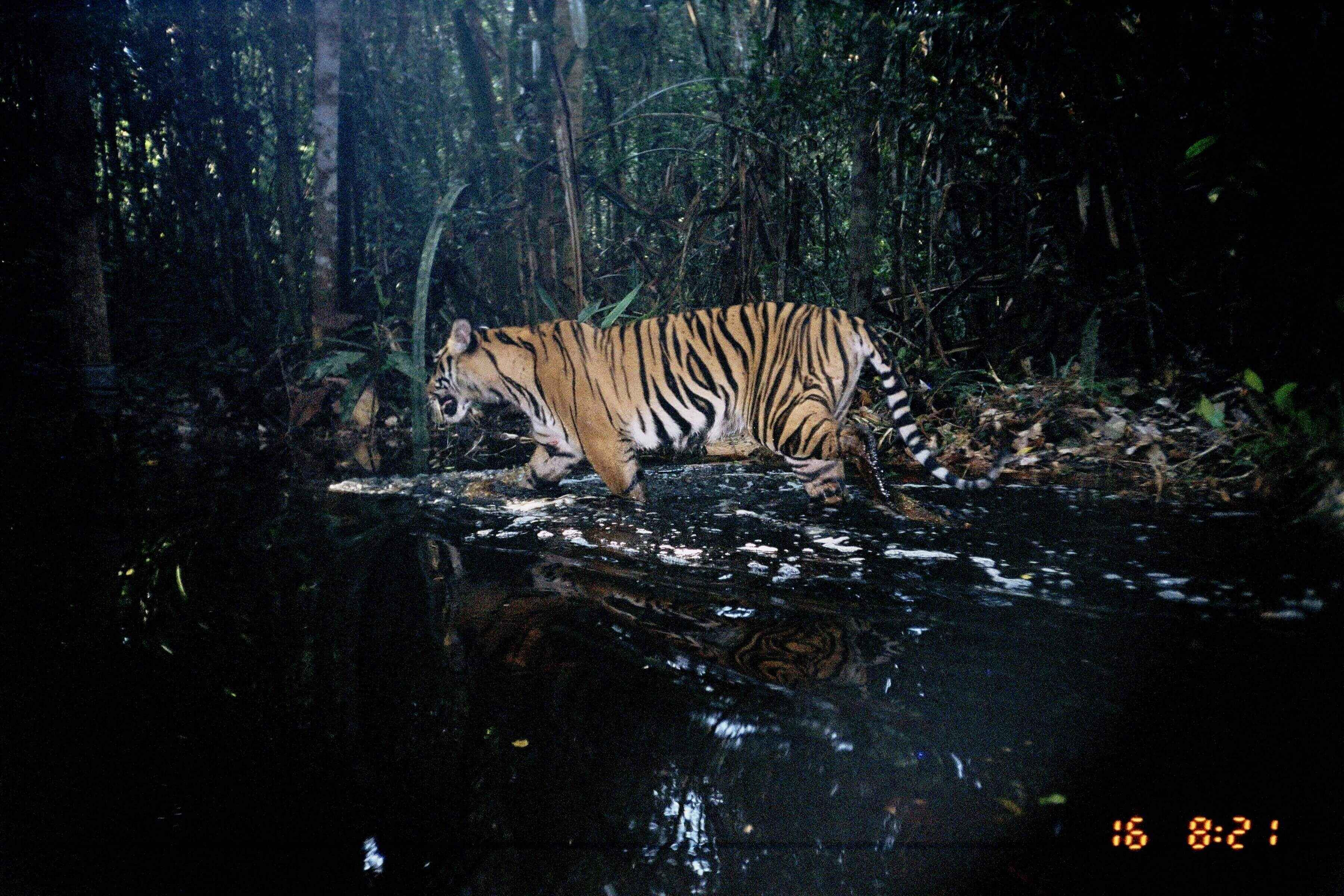PANTHERA TIGRIS SONDAICA, THE INDONESIAN TIGER
There are nine tiger subspecies in the world, Indo-china Tiger (Panthera tigris corbetii), Bengal Tiger (Panthera tigris tigris), South China Tiger (Panthera tigris amoyensis), Siberian Tiger (Panthera tigris altaica), Malayan Tiger (Panthera tigris jacksoni), Sumatran Tiger (Panthera tigris sumatrae), Javan Tiger (Panthera tigris sondaica), Bali Tiger (Panthera tigris balica), and Caspian Tiger (Panthera tigris virgata).
26th June 2015, a result from a study of the taxonomy of big cats with a stripe fur patterns was published. The research was carried out by several scientists from the Institute of Leibniz for Zoo and Wildlife Research (IZW) Berlin, Germany, namely Andreas Wilting, Alexandre Courtiol, Per Christiansen, Jürgen Niedballa, Anne K. Scharf, Ludovic Orlando, Niko Balkenhol, Haribert Hofer, Stephanie Kramer-Schadt, Jörns Fickel, and Andrew C. Kitchener. The results of the study entitled "Planning Tiger Recovery: Understanding Intraspecific Variation for Effective Conservation" is considered revolutionary and have succeeded in making a commotion in the world of conservation. Not only that, some people consider the results of this study controversial.
Different from the taxonomic studies in general, these European researchers actually simplified the classification of existing tiger subspecies. The results of the study published in the journal titled Science Advance volume 1 No. 5 of 2015, reveals scientific facts that show a new classification of tigers in the world, from the nine subspecies to two subspecies.
All types of tigers that are spread on the Asian mainland, starting from Russia, the Middle East, India, China, Indo-China to the Malaysian peninsular are considered as one of the same subspecies, the Continental Tiger. The scientific name is Panthera tigris tigris, who has only been used to refer to the Bengal Tiger. Whereas the three types of tigers in Indonesia (Javanese Tiger, Bali Tiger, and Sumatran Tiger) are considered to be one subspecies named Sunda Tiger with the scientific name Panthera tigris sondaica. The choice of the word "Sunda" refers to the biogeographic region which includes Sumatra, Java, and Bali.
Classification of the two subspecies was carried out by Andreas Wilting based on the merging of various key characters from the three main aspects, morphology, genetics, and ecology. This differs from the previous taxonomic studies which only relied on the characteristics of the body shape or morphology. In addition to considering genetic and morphological characters such the skulls and the stripes, these scientists also considered the ecological characteristics of the tigers, such as distinctive ecological characteristics (niches) and the adaptability of tigers in a variety of habitat types. However, this simplification of the taxonomy of the large striped cat subspecies is still being reviewed by the International Commission on Zoological Nomenclature at the global level, and also by the Indonesian Institute of Sciences (LIPI) as a scientific authority at the national level.
If indeed the Javanese Tiger, the Bali Tiger and the Sumatran Tiger are of the same subspecies as the Sunda Tiger, the question is whether Sumatran Tiger conservation efforts carried out on other islands such as Java and Bali can be done? Reintroduction of species is an effort that makes it possible to restore species that have been declared extinct in certain regions. WWF-Indonesia wildlife ecologist Sunarto said that the reintroduction of Sumatran Tigers is possible on other islands, but requires a long process and mature steps. Tigers cannot just be released in their new habitats.
Before reintroducing the Sumatran Tigers to their new habitats, there must be in-depth research that leads into the reintroduction efforts which will take at least 20 to 50 years. The exploration process must be carried out immediately and must not be carried out when the tiger population is very low because the threat will increase.
It is undeniable that the hunting and the illegal trade of big cats on the black market is still rampant. Not only that, the conversion of forests to settlements or plantations which are claimed as homes of tigers, often triggered conflicts between the tigers and the humans, which creates the stigma that Sumatran Tigers are dangerous animals and must be killed. This has become a very frightening specter for the preservation of animals dubbed the jungle king.
Tiger is an important animal in our ecosystem, because it is top class predator in the food pyramid. As a result this large cat has a role as a population controller in nature. Its broad roaming space also makes this animal one of the umbrella species in Indonesia. When we protect and preserve Sumatran Tigers, other animals living in the forest in their roaming spaces are also protected. If these animals become extinct, automatically the balance of the ecosystem will be disrupted.
The classification results by Wilting shows that the Sunda Tiger (Panthera tigris sondaica) is only found in Indonesia. Even though it seems like there is a reduction in the tiger subspecies in Indonesia, from three to only one subspecies, we should still be proud. This is because Indonesia is the only country being the habitat of this one species of tiger. Indirectly it can be said that the Sunda Tiger is an endemic Indonesian tiger, different from the Continental Tigers which spread in several countries. Therefore, we could recognize the Sunda Tiger as the Indonesian tiger or the Nusantara tiger. So it is reasonable that the Indonesian people feel the responsibility to protect this unique subspecies together. To maintain the preservation of the Indonesian Tiger is our duty as Indonesian. Do not let this admirable animal become extinct! Let us rescue the Indonesian Tiger together!





